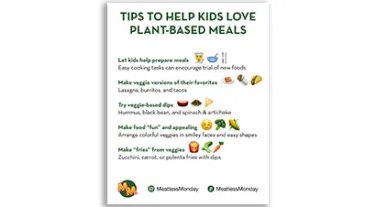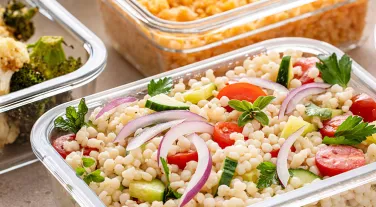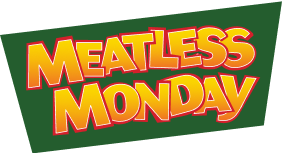Preparation is key to maintaining a healthy diet. Planning meals for the week allows you to budget your time and resources while also helping you control your portions, manage food waste, and avoid turning to unhealthy options and fast food. When you have plans for breakfast, lunch, and dinner, suddenly the stress of putting food on the table disappears, and you can enjoy the cooking process.
How to design a meatless meal plan
Select the number of meals
Determine which meals you want to prepare for Meatless Monday or for the week. Start with a few dinners and gradually increase based on personal needs and requirements. For maximum efficiency, focus on recipes that can be cooked in big batches, like stews, soups, baked pastas, casseroles, roasted vegetables, burrito/taco fillings, rice, and quinoa. These tend to require less prep work and often yield leftovers for tomorrow’s lunch or dinner.
Keep a stocked pantry
Foods like canned beans, oatmeal, brown rice, pastas, nut butters, vegetable stock, frozen fruits and vegetables, dried peas and lentils, or long-life fresh produce, like potatoes, sweet potatoes, and cabbage, can be combined to make hundreds of different meals. Pair these ingredients with sauces and condiments, like honey mustard, ketchup, hot sauce, soy sauce, and salsa to quickly elevate/enhance their flavor. When filling up your kitchen, focus on ingredients with a long shelf life to minimize the risk of spoilage and food waste.
Choose your recipes
When selecting recipes for the week, consider making meals that cross-utilize similar ingredients. Fresh spinach or kale can be used for salads, but the greens can also be added to pastas, stir-fries, and soups. The same goes for a can of beans, which can be incorporated into chili, veggie patties, fillings, or meat-free meatballs. Pairing a whole grain and protein is another way to easily mix and match your ingredients. Pastas, stews, casseroles, salads, stuffed peppers and cabbage, or burrito bowls are all economical, simple to make, and easy to prepare in bulk.
Schedule a shopping day
Picking a specific day to do your grocery shopping makes it easier to stay committed to your meal plan. The weekend allows you to shop for the week ahead; just consider going during off hours to avoid crowds.
Prepare your ingredients ahead of time
After a long day, it’s not always easy to muster the energy to wash, chop, slice, and peel ingredients. Doing some of the prep work ahead of time makes the cooking process much faster. Store the prepped ingredients in containers or freezer bags so they’re ready and available to use. Rice, noodles, or other grains can also be cooked in large quantities ahead of time to ensure that there’s always a carbohydrate ready.






